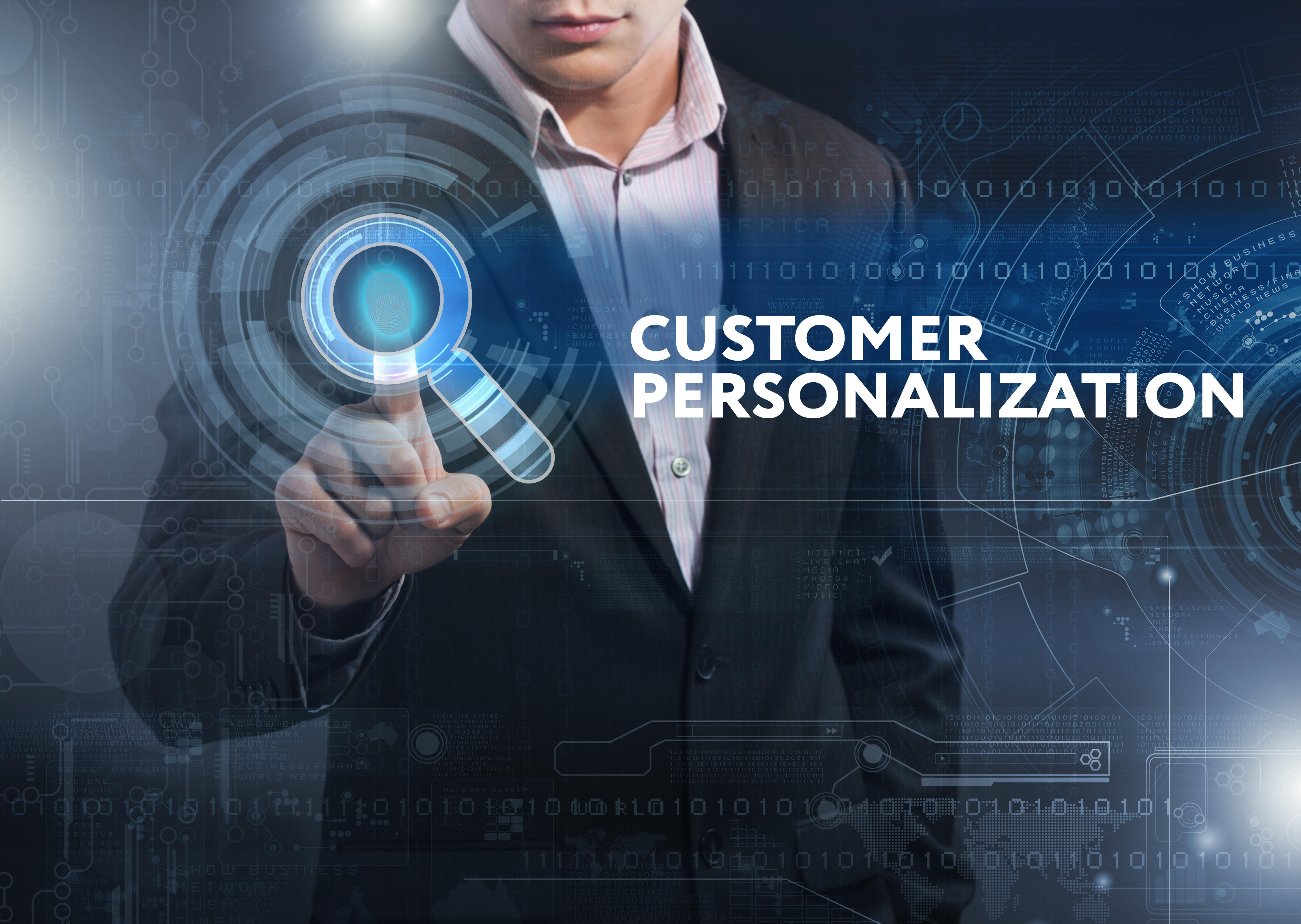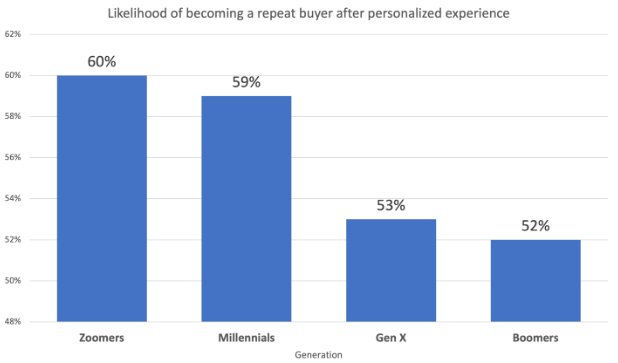Welcome to Number of the Month, where we dig deeper into the research and data that's shaping the communications technology industry. This month, we look at a report from customer engagement and data platform provider Twilio, which found that 56% of surveyed consumers will become repeat buyers after a personalized experience with a company, but underlying that statistic is an apparent shift in how the generations (Boomers, Xers, Millennials and Zoomers) respond to that personalization.
The number of the month: 56%
That's the percentage of surveyed consumers who are likely to become repeat buyers after a personalized experience with a company. The number comes from an online survey conducted by Twilio and its research partner Method Communications between March 8 and 24, 2023. The results were published in Twilio’s State of Personalization 2023 report.
They surveyed 3,001 adult consumers who have purchased something online in the past 6 months, and 500 adult manager/decision-makers at consumer-facing companies that provide goods and/or services online. Respondents were from Australia, Brazil, Colombia, France, Germany, Italy, Japan, Mexico, Singapore, Spain, United States, and the United Kingdom.
Why?
No Jitter (NJ) spoke with Kathryn Murphy, Twilio's VP of Product Management about this number – the 56% – and others related to personalization. For example, Twilio’s survey found that 69% of businesses, despite the current “economic headwinds,” are investing in personalization technologies like customer data platforms.
According to Murphy, this investment can range from simple things like using technology to avoid “sending email or ads that don't make sense – like if the customer is muting things on social media or if they’re unsubscribing.”
The next level involves creating personalized content which not only involves choosing the right medium (email, social, SMS) for communication and the frequency (daily, weekly, monthly, etc.) the customer prefers but personalizing “the message itself, the words used in the subject line, the images shown, and even the categories [of products/services] shown.”
The step beyond that is when companies tailor their mobile app or Web site to their customers. “It knows who you are. It's talking to you, it says your name, it knows your preferences, it knows your most recent behavior and can create sort of this more connected, continued experience for you,” said Murphy.
This is the kind of increasing personalization that, as the survey found, helps transform customers into repeat buyers – and that has a direct impact on lifetime value, ad spending, etc. But the survey also highlighted an emerging tension in the model between providing relevant personalization as opposed to “creepy” personalization where the site, app, emails, messages, etc., seem to know just a little too much about habits and preferences.
Murphy noted that there are certainly (ever-changing) guardrails in place that help constrain the “creepy” factor which must be heeded – e.g., consent, company privacy policies, platform privacy policies (e.g., Apple/iOS versus Google/Android), U.S. federal and state regulations, GDPR and other, country-by-country regulations.
But the survey data highlighted a growing divide between the age generations and their expectation for personalization. “You've always had that tension around personalization – relevance versus ‘creepiness,’ and that’s certainly changing because there are more privacy laws, etc.,” Murphy said. “But this year's report really starts to highlight that what is not ‘too creepy’ varies widely across the different generations.”
For example, here’s how those 56% of consumers becoming repeat buyers after a personalized experience breaks out by generation (the nearby chart; note the Y-axis scale):
- 60% of Gen Z (or Zoomers; 2005-1997, ages 18-26) become repeat buyers
- 59% of Millennials (1996-1981, ages 27-42) become repeat buyers
- 53% of Gen X (1980-1965, ages 43-58) become repeat buyers
- 52% of Boomers (1964-1946, ages 59-77) become repeat buyers.
Source: Twilio’s State of Personalization 2023 report
Clearly, personalization has a positive impact regardless of generation. But the 6-point gap between Millennials and Gen X illustrates the divide that Murphy mentioned.
The Twilio survey also found that 49% of Zoomers and 43% of Millennials said they’re less likely to make a purchase after an impersonal experience. Flipping that around, the survey data suggests that more than 61% of Gen Xers and 66% of Boomers will continue shopping despite an impersonal experience versus 51% of Zoomers and 57% of Millennials. On this metric, there’s less of a raw percentage difference between Gen X and Millennials, but the contrast between Zoomers (51%) and Boomers (66%) is stark.
“If companies don't start addressing this growing divide in personalization expectations,” said Murphy, “they're going to lose whole batches of customers by generation demographics.”
And from Murphy’s perspective, a key step in addressing that divide is via first-party data. Obtaining, consolidating, and organizing first party data is the first hurdle – and it can be tough, particularly when that data can be spread across regions, different business systems, social platforms and then bound by different regulations, policies, or other constraints. Another hurdle requires investment in technologies like customer data platforms to identify, track and segment customers.
This is where customer data platforms, along with predictive AI, are useful because they can automate much of that work. Generative AI may also prove useful, because, as Murphy said, “[it can] read a lot of data about my customers and then be able to answer questions like, how do I best win back this cohort of customers?”
She also acknowledged that it is critical to weigh those benefits against the risks, that is: “How do you get the power of a large language model with all the benefits of privacy and security. We work directly with OpenAI and I think that right now we just have to figure out these problems together.”
Fundamentally, though, even the most basic personalization produces results. At first, this typically comes in the form of cost savings because companies no longer spend money on Google or Facebook ad dollars, or on SMS messages that people unsubscribe to, because their customers (or cohorts of their customers) don’t interact with the brand in those ways. As Murphy put it, that’s the “basic block and tackling that happens because you start to know your customer.”
After that, personalization starts to pay dividends. “Okay, say we figured out [that a customer wants] just one email every week with their favorite items and then they’ll click through and buy,” Murphy said. “That’s where we see the revenue side start to happen.”
To Learn More, Read These
For more about the challenges associated with personalized customer experiences, check out:











